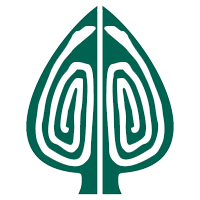Many of Ahmad Nadalian’s works can be categorized in the field of activist or protest art. He expresses his criticism and protest regarding ecological, social and political issues through creative expression; showing environmental destruction, cultural heritage, attention to neglect women’s rights and and their ruthless murder through body and performance art. These works lead to awareness about issues that the artist intends to be seen. He displayed through documentation in virtual environments.
Protection of Rivers: Over two decades, Nadalian carved hundreds of goddesses and fish on river rocks and gifted them to nature. Unfortunately, ignorance and lack of respect for nature caused protected natural environments to be exploited personally and industrially, resulting in the destruction of many of his works that existed in Iran’s nature. He drew public attention to the destruction of water resources and river pollution.

In protest against the destruction of riverbeds, he attacked the loaders that were causing destruction with stones and created numerous artistic works as protest.
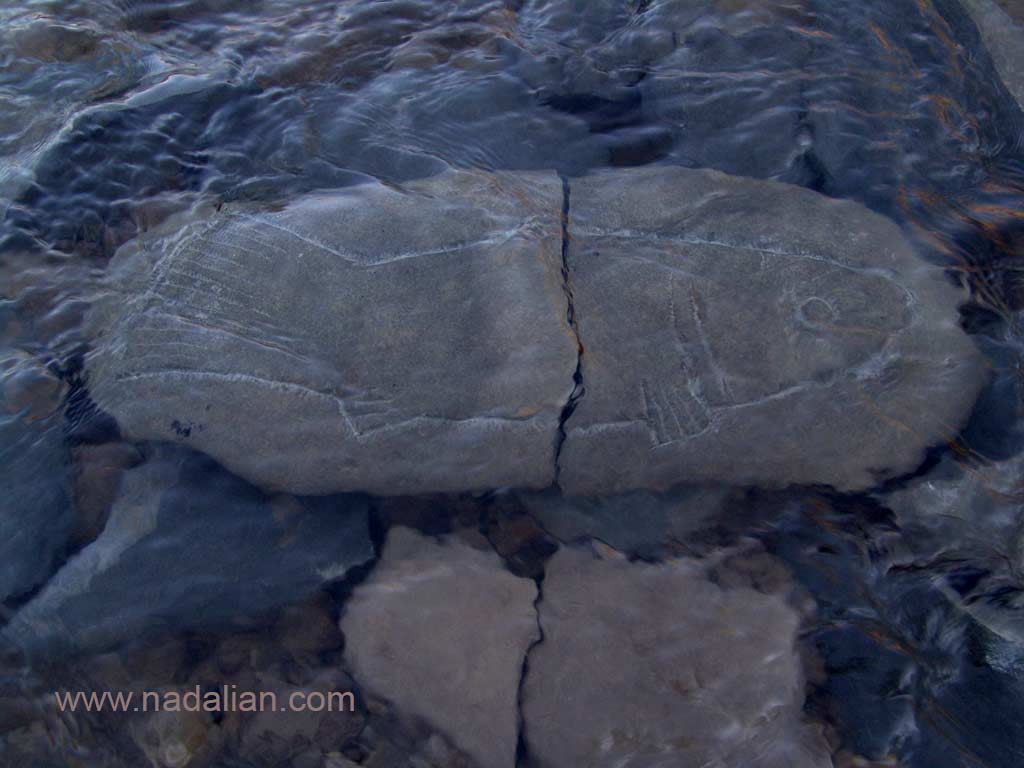
The bad consequences that were created for his works became a ladder, and I enriched the meaning of the works by referring to myths, beliefs, and even social conditions.
These actions show that Nadalian has put art in service of protecting the environment and natural heritage. His art is not merely aesthetic but is a tool for criticizing environmental destruction and calling for social responsibility. Nadalian says: “In many cultures, there was a belief that the earth is the mother goddess. Polluting and harming the earth was considered disrespectful to it. This belief existed in the past that women unwillingly became victims of evil and were harmed and deprived of many of their duties. In the contemporary world, attention is paid to women’s violated rights. This is why history has been re-examined and in many social movements, female heroes are admired.”
“Death of Goddesses” Collection: In reaction to the damage inflicted on cultural heritage, natural environment, rivers, and Mount Damavand, Nadalian formed a protest project titled “Death of Goddesses.” This work was a type of protest art that reflected the destruction of the region’s natural symbols in his art.

Nadalian’s works are often multifaceted. For many years, wounded goddesses have had allegorical presence in reliefs, sculptures, and Nadalian’s paintings, referring to the wound of the myth of wounded women. On one hand, his works are rooted in myths, connected to environmental issues, and social issues are reflected in his works. Whatever happens around him always affects his works.
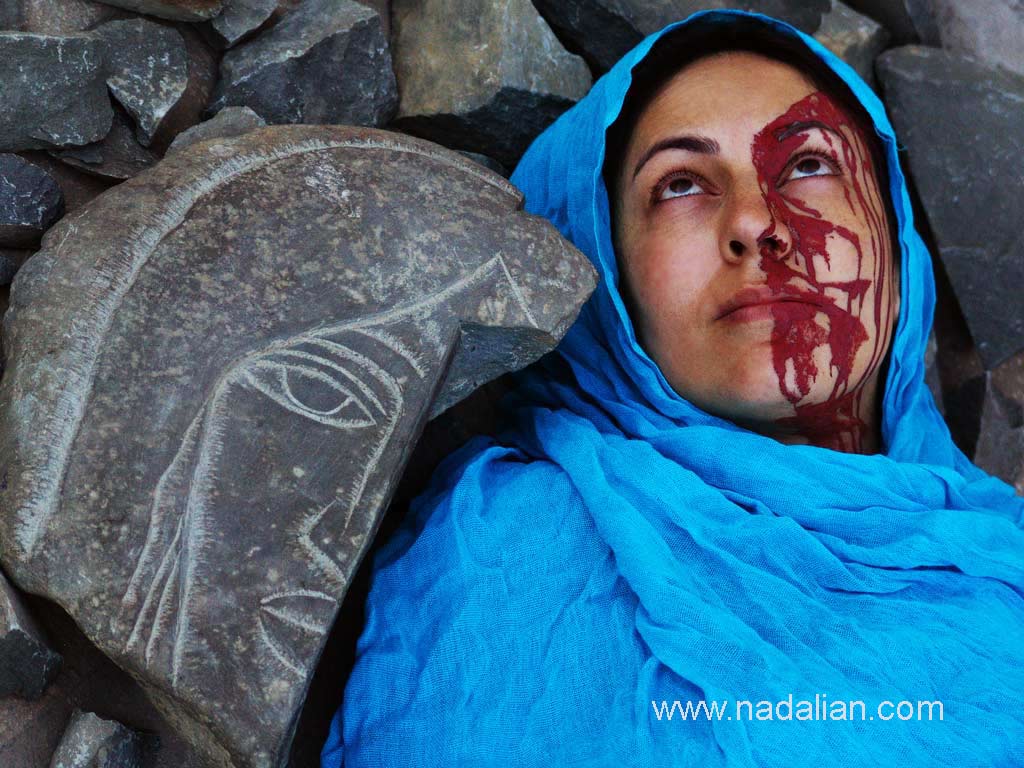
In continuation of environmental works, the wounding of women in social events of 2009 was reflected in Nadalian’s works. His performance art, in collaboration with his wife in Polur, was reminiscent of the murder of Neda Agha-Soltan.
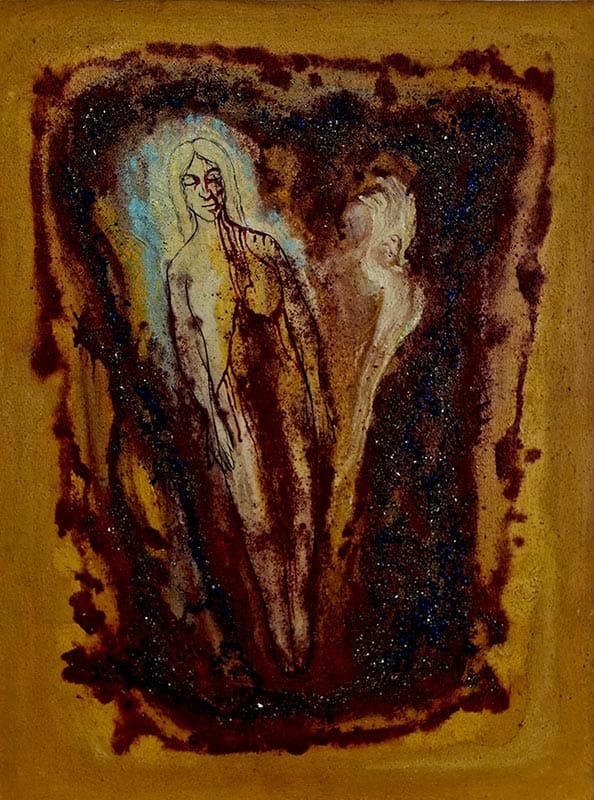
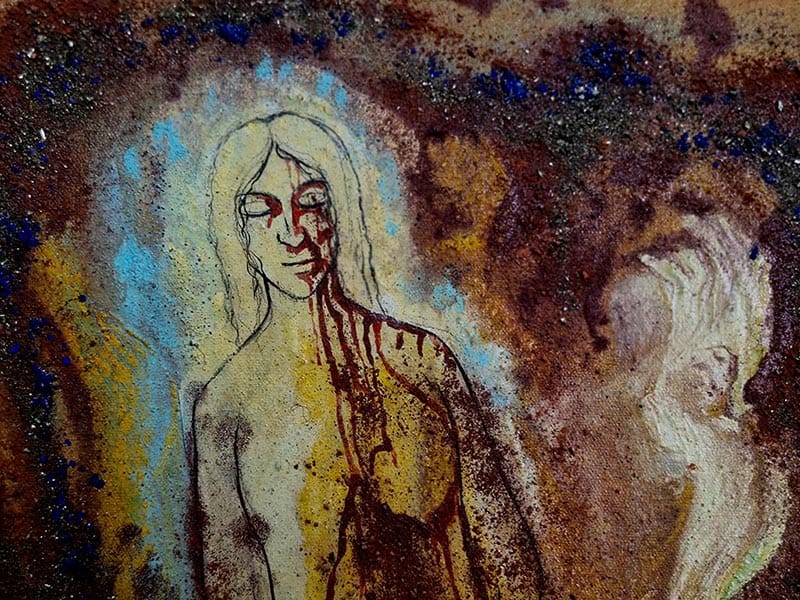
The same type of narrative can be seen in the paintings he created on Hormuz Island.
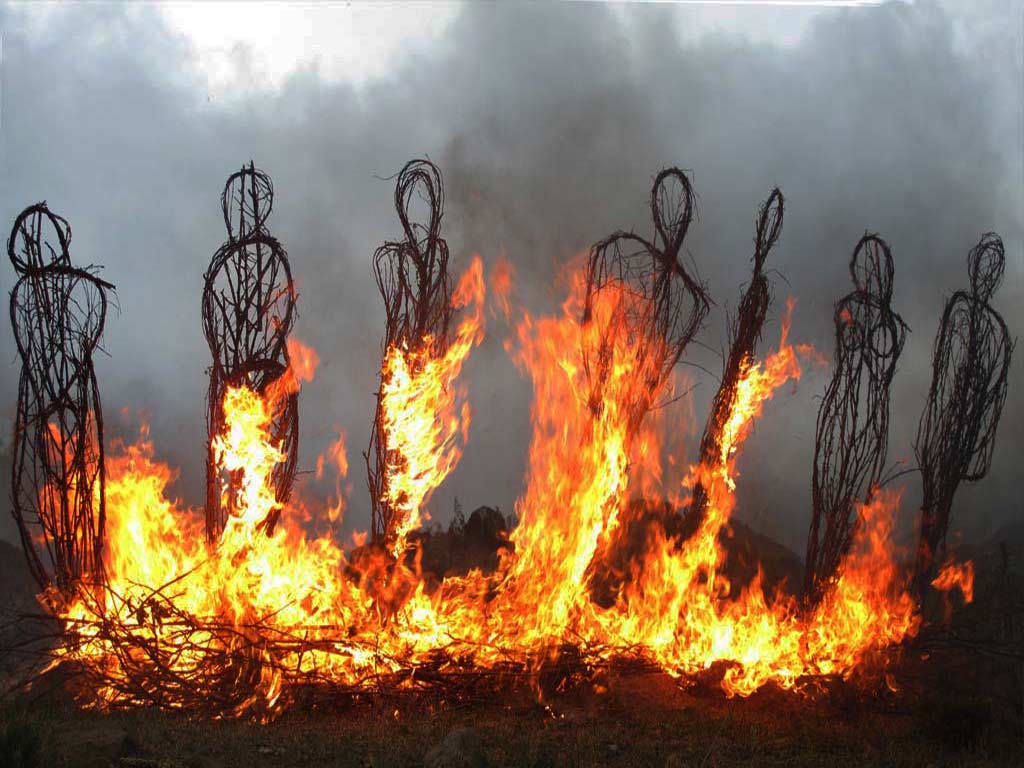
What Nadalian saw in Tehran’s streets was reflected in his works at the 2009 environmental festival.
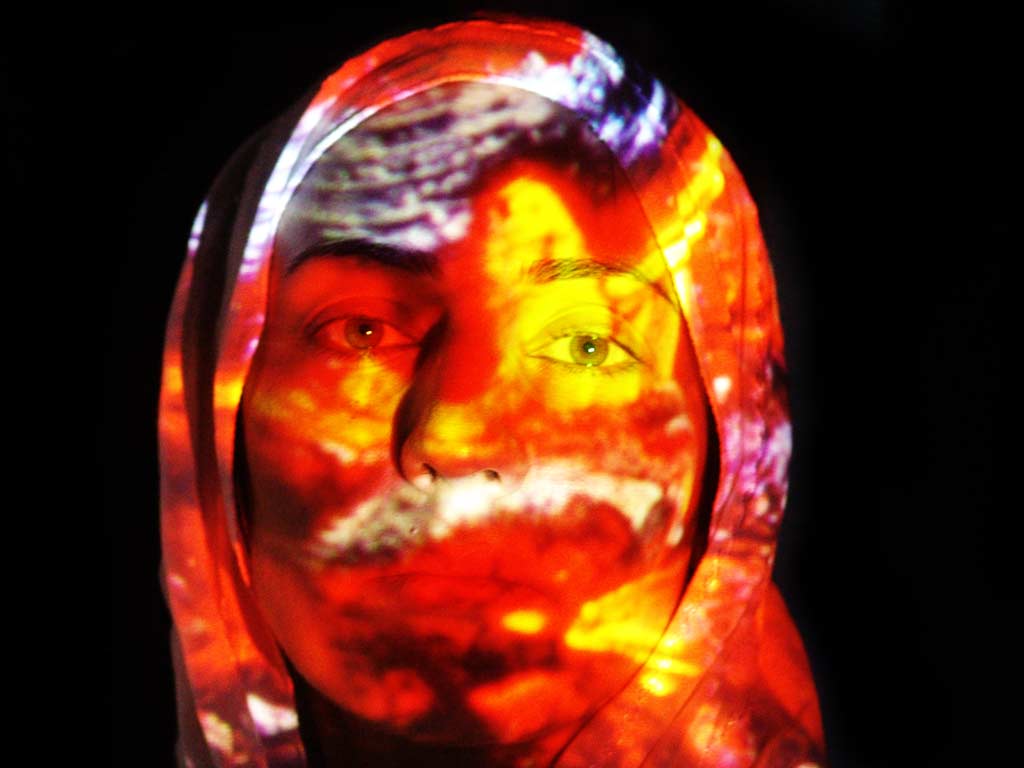
Opposition to the Destruction of Historical Works Related to Qaleh Dokhtar
Nadalian showed sensitivity to the destruction of historical buildings related to Qaleh Dokhtar and reacted to this issue in a protest and symbolic manner through the language of art.
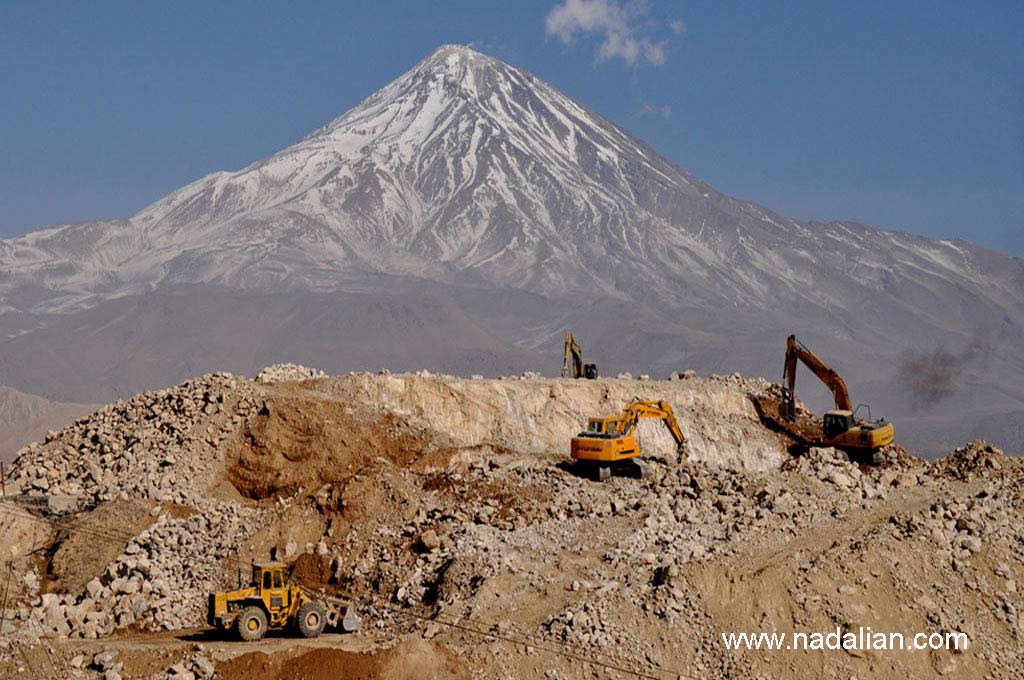
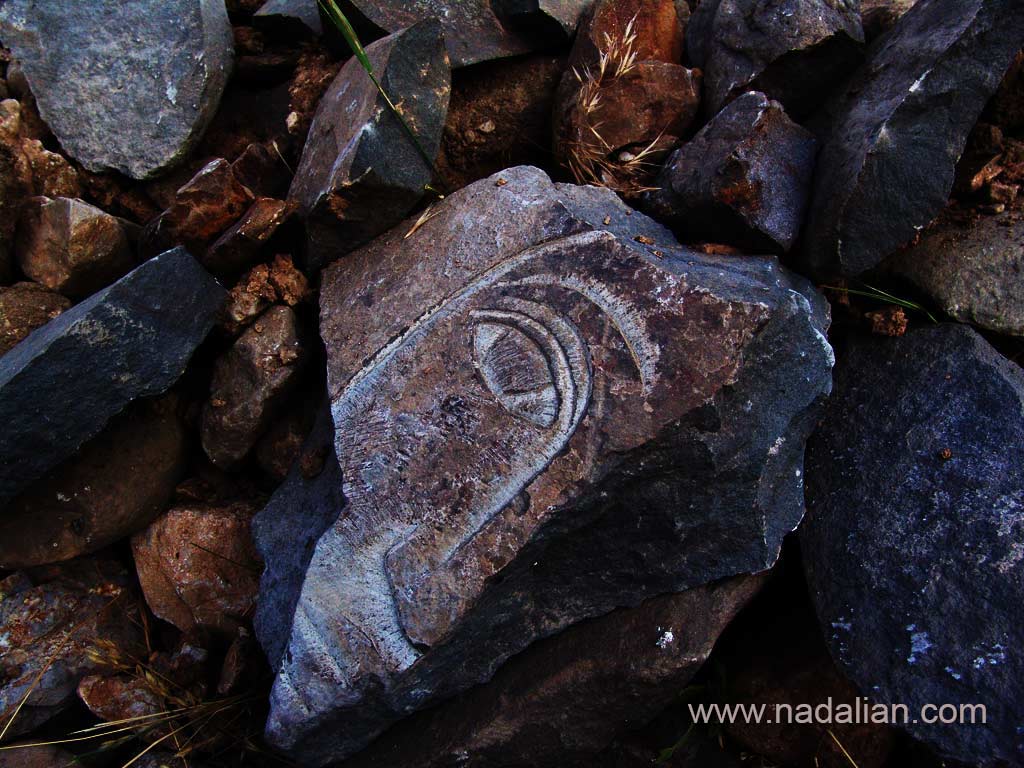
After creating protest works, Nadalian was threatened by the destroyers. They sent him a message that they would put him in a sack and take him away.
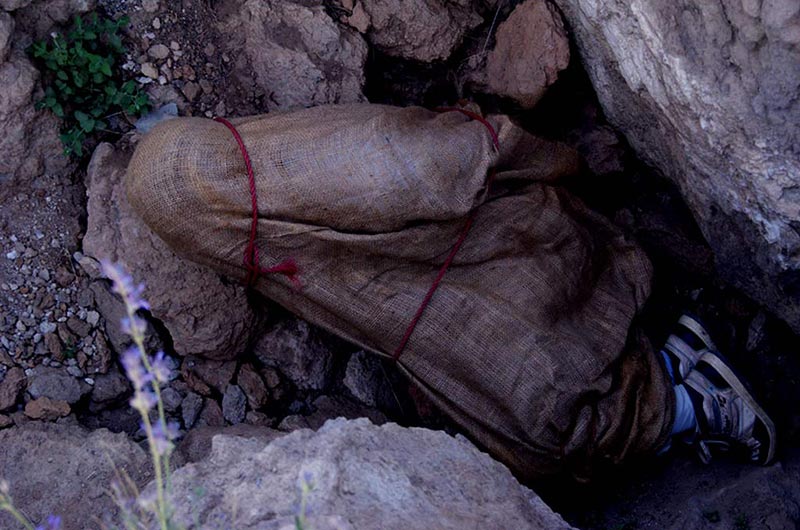

Regarding Hormuz too, for supporting and selling women’s works, they slapped him and broke the women’s paintings. He protested actively and reddened his face.
Activist Events in Hormuz
Alongside his works in Polur and other provinces, his activity in Hormuz was linked to social empowerment and utilized participatory art. Through combining education, artwork creation, and social empowerment projects, he considered local women and marginalized communities. The beginning of the work was very difficult. Fanatical men didn’t want girls to have presence in public environments. Due to girls accompanying Nadalian, several fanatics who had very violent behavior, due to jealousy or ignorance, broke the artistic works performed by women that were displayed behind glass. One of them attacked Nadalian and after insulting him, slapped his face.
He not only witnessed physical violence (being slapped) but even women’s paintings were broken to stop his activities. Instead of silence, Nadalian protested actively and to represent this violence and injustice, he reddened his face with Hormuz soil and held a broken image of a woman’s face and took a photo of himself. The image was reflected in virtual space and Iranian news agencies. This act was a type of protest performance that symbolically showed blood, violence, and resistance. Later, this image was published on the cover of one of his books.
Nadalian had collected all the other broken works. By arranging the broken paintings together and creating a new narrative that these works are symbols of harmed women, the works were sold at higher prices. This process was an opportunity and now this issue has become a point of strength. Now Nadalian himself breaks the glasses and sells them as “wounded women.” This event later became a point of strength for women in that society and now they have a significant presence in public environments.
The Hormuz Island story is one of the most important manifestations of Ahmad Nadalian’s activist art, because here his activity went beyond merely educational and empowerment modes and clearly became social protest.

“Two days after being slapped, I painted my feelings on my face.”
Importance of This Action
This movement went beyond the level of women’s economic empowerment and became an artistic-social protest. As a social artist, with his own body and symbolic action, he showed his solidarity with Hormuz women.
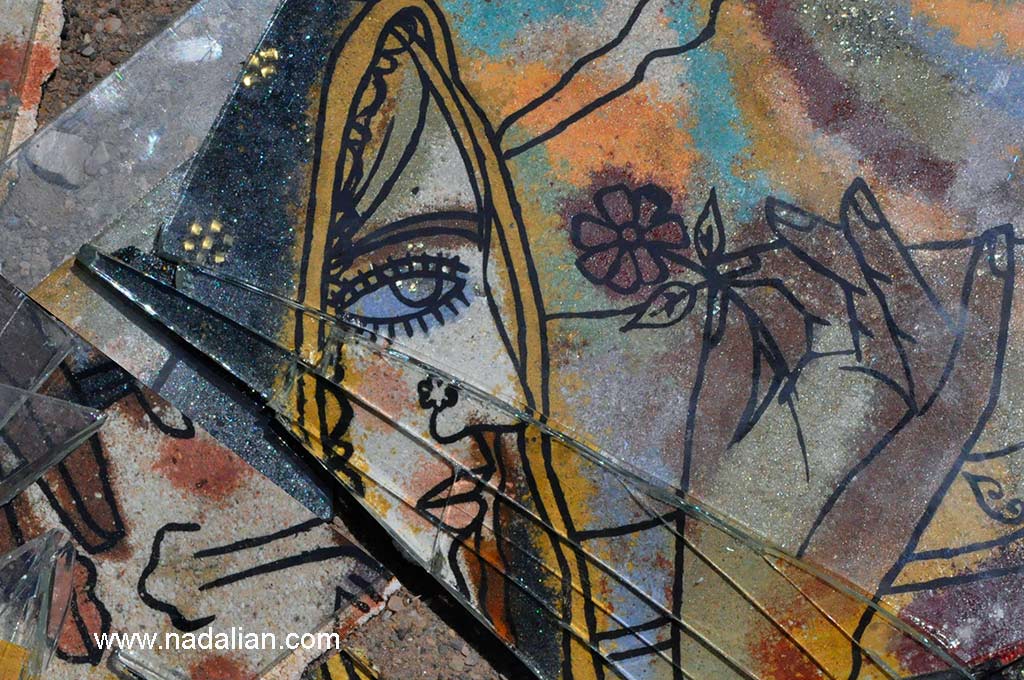
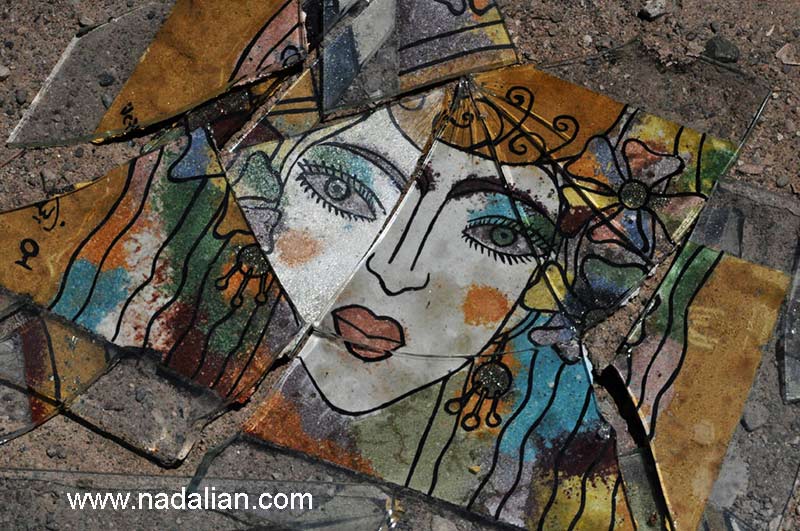
In the path of social activism in the territory of Sangsar nomads, Nadalian has always tried to identify the dance steps of this ethnic group while paying attention to women’s clothing, and while supporting them, perform and document their dances. Perhaps for an international audience, it would be very strange that in Iran one must fight to dance.
Ahmad Nadalian: Transforming Communities Through Social Sculpture and Community-Based Art


In this path, many girls and women courageously accompanied me, and fanatics created problems for me and my companions in various ways. The future belongs to us. They cannot bear to see girls’ and women’s hair and oppose their dancing.
In late October 2014 in Isfahan, over several weeks, several young girls were targeted for acid attacks on their faces due to not having appropriate hijab. After hearing the news of acid throwing at women’s faces, Nadalian, with his wife’s help, performed works in protest of this issue. His intention was to sympathize with girls and women whose bodies and souls had been harmed.

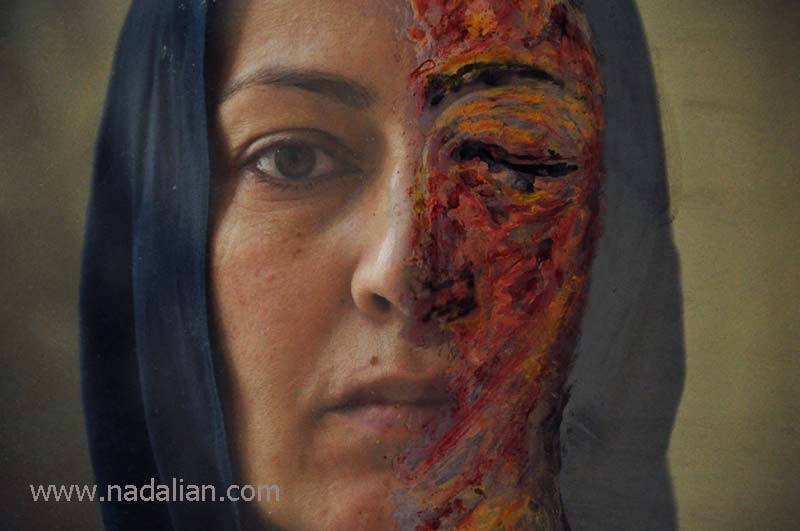
Acid Attack Victims: Ahmad Nadalian’s Artwork, 2014
Other events that showed physical and psychological harm to girls and women always affected Nadalian’s artworks. Through various media, he shows the suffering of women who self-immolated and burned in fire.
During a trip to Ilam and when he was holding workshops for the province’s artists, on the day of women’s self-immolation in Ilam, with the participation of local artists, they performed the topic of self-immolation in the form of performance art and video art.
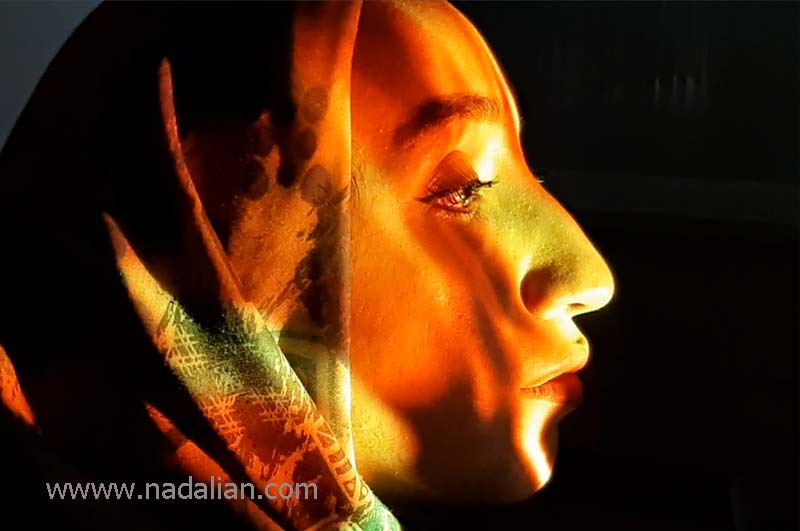
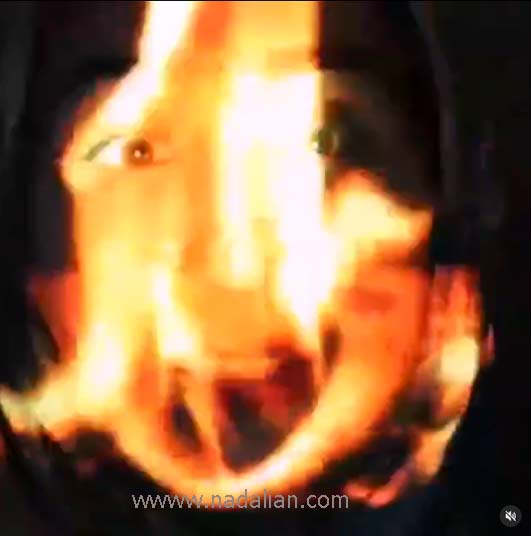
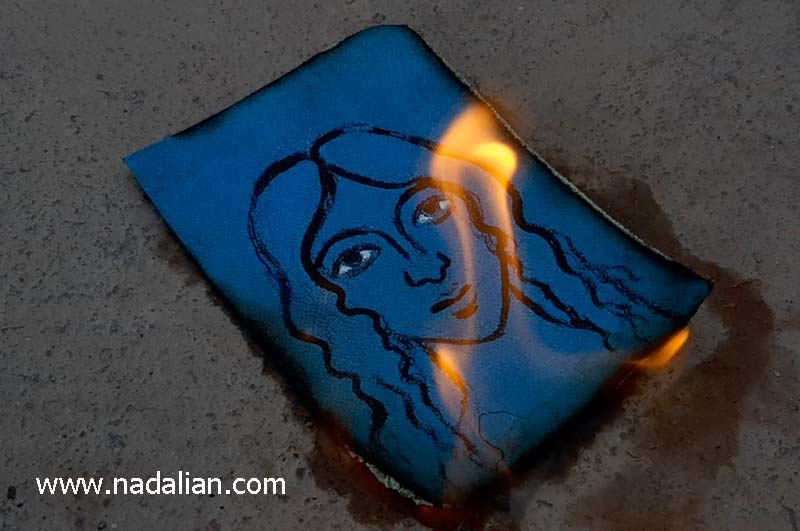
After hearing the news of a football-loving girl’s self-immolation in Tehran, he also performed a work. At that time, girls were not allowed to be present in football stadiums. For this reason, a girl had self-immolated.
After Romina’s murder by her father who killed her with a sickle, Nadalian performed another work.
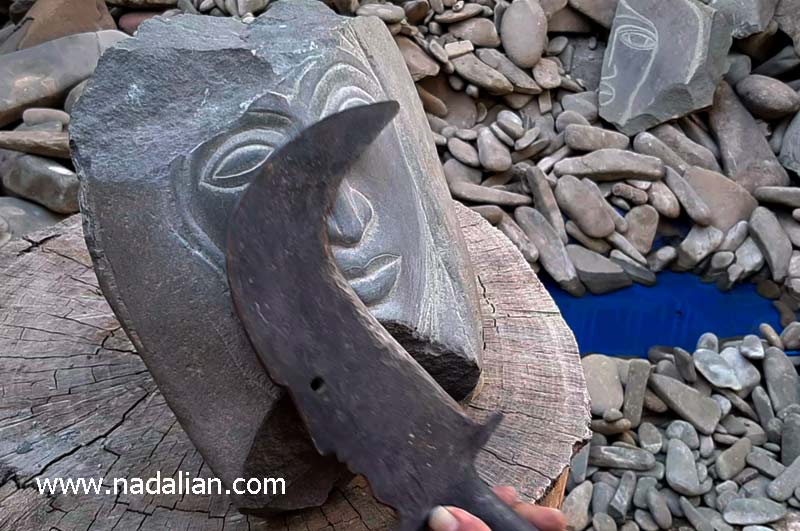

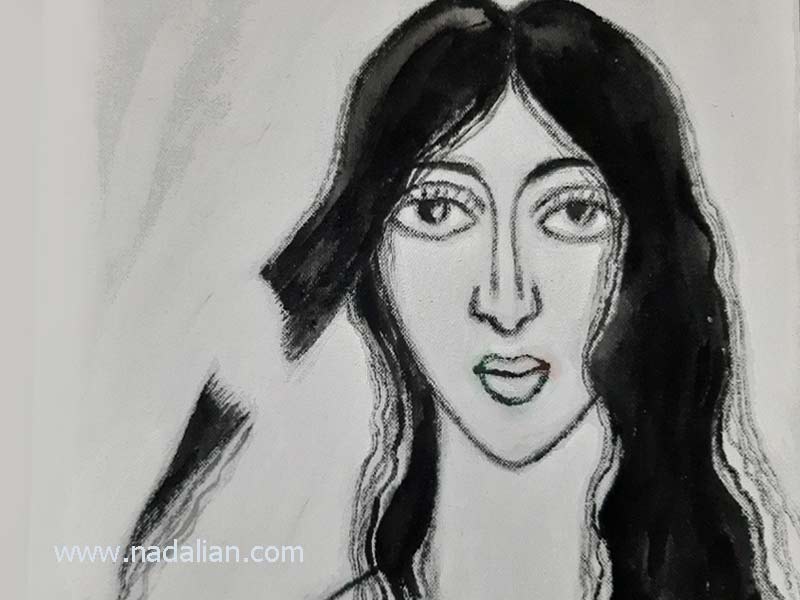
Girl with Cut Hair, Ahmad Nadalian, painting on canvas
In Iran, for women to be able to dance, we must fight. Perhaps in Western culture, many cultural matters are very common and normal. But in our country, through activism and risk-taking, conditions can be facilitated for women. In a series, Nadalian took old irons to a blacksmith and in collaborative work made cold weapons, swords, knives, and sickles. He gives these weapons to women.
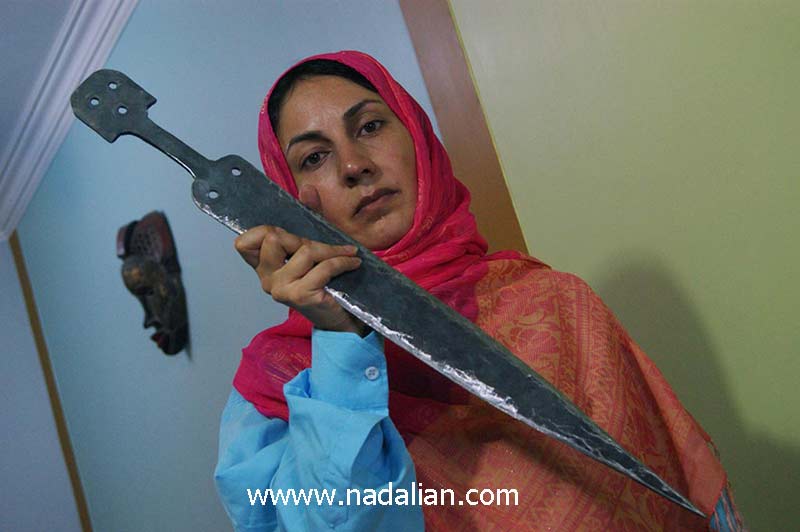
“I gave the sharpened sword to my wife.”
Symbolism of Weapons
In a symbolic act, Nadalian collaborated with blacksmiths to transform old irons into weapons, which he ‘gave’ to women. This metaphor represents empowerment and self-defense in a society where women have often been victims of violence.
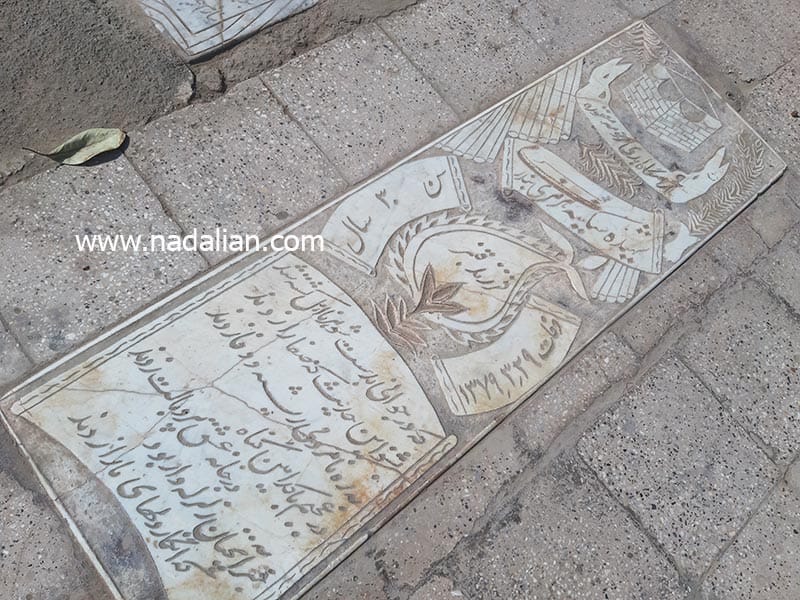
Nadalian documents the unfortunate consequences that have occurred for women through photography and documentary making. This gravestone shows a woman murdered by her husband in Molla’s tekyeh on Hormuz Island is no longer visible due to renovation.
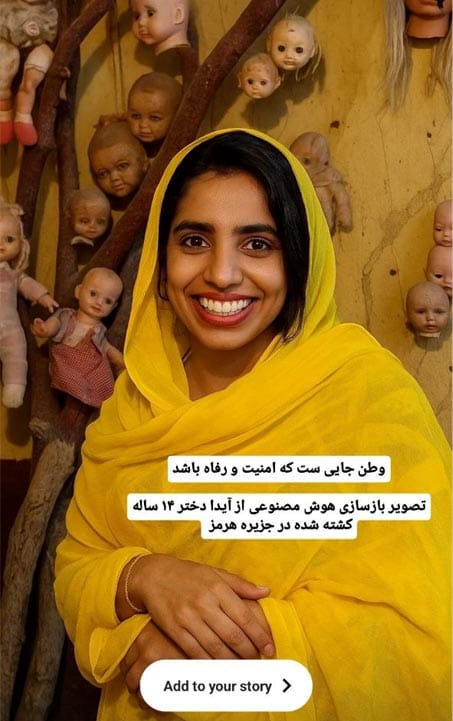
After Aida’s murder in Hormuz, he reflected her films and photos on social networks, and southern artists created new works with artificial intelligence that were republished.
Addressing Racial and Social Issues
Beyond Iran, Nadalian addressed racial issues:
– In Zanzibar, through ‘Experience of Blackness in the Land of Blacks’
– In South Africa, through ‘Exchange of Black and White,’ symbolizing unity and equality.
In his trip to Zanzibar (Black Land) with the help of local artists I made my skin black and I walked in the streets of the neighborhood that was the center of the slave trade in times past. It felt good to be similar to other people
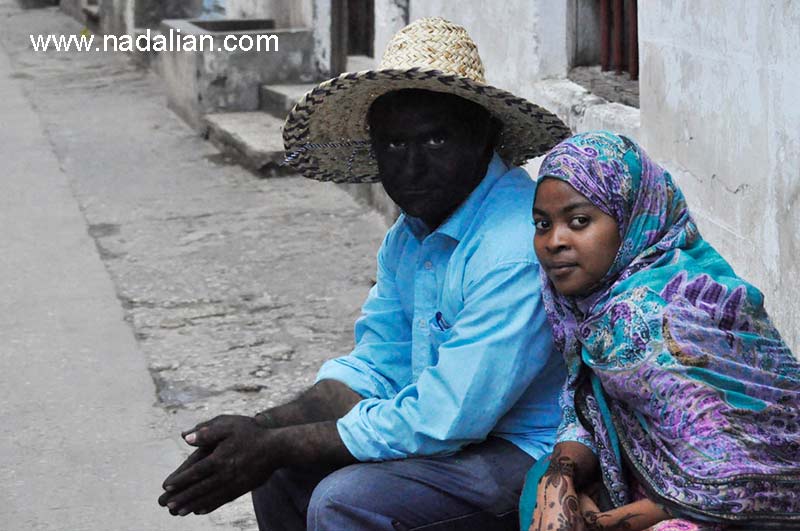
A number of Nadalian’s works pay attention to racial issues and people of color. During a trip to Africa, in Zanzibar, Nadalian performed a piece called “Experience of Blackness in the Land of Blacks.” He wanted to experience being black.
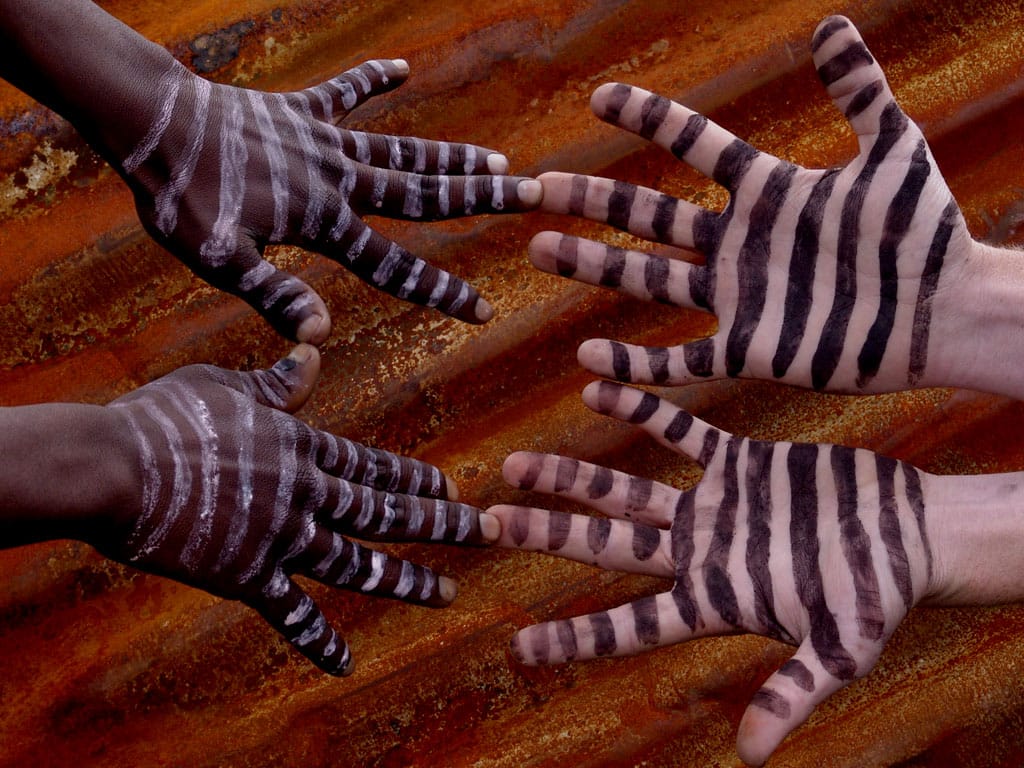
In South Africa he saw a society that shows a mixture of Africa and the West. He felt that after many years the dominating effects of Apartheid are still not over; there is distance and gap between the poor and the rich, black and white. Nadalian is not black, nor white, perhaps something in between. Having this color, he also met many respected people, mostly white, who try to bring equality. They do their best to educate the society whose majority is black. This is a duty where there are many hands that need to touch. The pattern on the skin of a zebra inspired me to realize a project named “black and white”, where he paint with white color on black skin and black color on white skin to makethem similar.
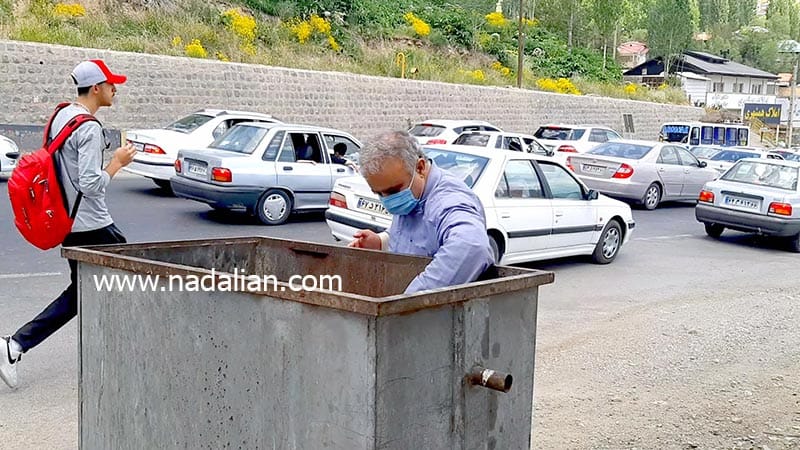
Environmental and Social Poverty Art
In a performance about poverty, Nadalian collected garbage, posting a video online stating:
“I have been garbage collecting for years. There are many jobs dirtier and more dangerous than garbage collecting — among them, cultural and artistic work.”
This act criticized economic disparity and the undervaluing of cultural labor.
Conclusion
Ahmad Nadalian’s art is a living form of activism, addressing issues like environmental destruction, cultural heritage, gender-based violence, racial injustice, and poverty.
Through symbolism and performance, Nadalian shows how art can challenge injustice and empower communities, proving that art can be a catalyst for social change.
Views: 30

 فارسی
فارسی